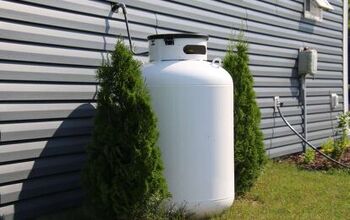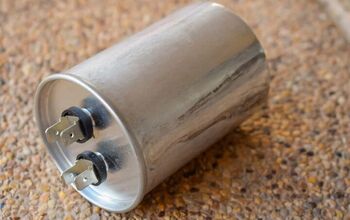How To Prepare Perennials For The Winter

Fall and winter can be stressful times for homeowners who take pride in their gardens. The lush colors of spring and summer begin to fade, and plants that are perennials enter a dormant state. Luckily, some of your plants will come back next year if you know how to prepare perennials for winter.
The best way to prepare perennials for winter is to prune them and kill weeds that would otherwise harm them. You must also fertilize your perennials and water them one more time for the season before the first frost of the year. Bring your potted perennials indoors and put them under grow lights if you want them to thrive during winter.
Otherwise, you must exercise patience and wait until March or April when your perennials will bloom again. Don’t be fooled into thinking that your perennials are dead when they go dormant, even if they look that way. Follow along as we explore how to prepare perennials for the winter before it gets too cold.
When Do Perennials Go Dormant?
Perennials go dormant by early-to-mid fall in most climates. It depends on the temperature and how quickly it gets cold where you live. The process is often slow, and perennials begin their dormant stage between late August and mid-September in most places.
This is a necessary part of a perennial’s life cycle, as it protects them from the harsh temperatures of fall and winter. By November, your plants will likely be fully dormant, and they may look dead from the outside. However, they are simply in “shutdown” mode, which lasts until March or April.
Some homeowners mistakenly remove perennials when they go dormant because they believe they are dead. They may look dead, but their root system is intact and will bounce back when spring rolls around.
What To Do With Perennials In The Winter
1. Retrieve Bulbs
Has the foliage on your perennials started to die yet? If so, then it’s the perfect time to retrieve some bulbs to plant or sell next year. This is a great way to make money from your garden, or you can simply keep the bulbs for yourself.
Ideally, you should dig your bulbs up before the ground freezes for the first time this year. Otherwise, the bulbs may suffer frost damage, and it will be hard to dig through the soil. Pick a day when the ground is dry, or else it will be hard to retrieve your bulbs.
Slowly and carefully dig until you reach the bulbs, which are often between 5” and 9” deep in the ground. Be careful and make sure you don’t damage the bulb. Let the bulbs dry for a few hours, then store them in mesh bags or cardboard boxes.
2. Kill Weeds
Many homeowners and gardeners alike mistakenly believe their plants are safe from weeds during winter. Sadly, that’s not the case, and you must treat your perennials for weeds before you prepare them for winter. First, you must pull any weeds that you see by hand to eliminate the threat.
It’s also important to apply mulch during fall before winter hits. Some gardeners even mulch their flower beds after the first frost of the year. Not only does mulch help protect perennials and other plants from weeds, but it also helps prevent soil erosion.
That is essential during the fall and winter when snow and ice are common in many regions. You can also install weed barriers before you mulch your flower beds, but some people consider that to be overkill. Protecting your perennials from weeds helps ensure they will come back next year.
3. Water Them Thoroughly
Has the first frost of the year hit yet? If not, then you must thoroughly water your perennials before it’s too late. Research the weather patterns in your area to figure out when the ground will freeze for the first time.
You can even water your perennials as late as the night before the first frost of the year. This will insulate the root system and fortify your plants to survive cold weather. The last thing you want is for your perennials to suffer shock when the temperature plummets for the first time in the season.
4. Prune Them
It’s essential to prune your plants to prepare them for the winter. Otherwise, your perennials will struggle to grow when spring comes around. Dead growth on plants not only weakens them, but it prevents quick, healthy growth.
You won’t see as many healthy blooms on your perennials when spring arrives unless you prune them. The bulkier a perennial is during fall and winter, the more stress it will put on the roots. However, you must be careful when pruning if you notice frost damage on your plants.
Perennials can often bounce back from frost damage after the first frost of the year. Pruning them too soon after they suffer frost damage can further shock your plants, and it can backfire. That’s why it’s best to cut back your perennials during September or October before the frost hits.
5. Provide Nutrients
Just like us, plants rely on nutrients to stay healthy and recover from changes. Potassium, nitrogen, and phosphorous are among the most important nutrients for perennials and annuals alike. That said, some gardeners debate whether or not to fertilize perennials before winter.
However, many people have lots of success with fertilizing their plants before the first frost of the year. Fertilizer isn’t your only option, as you can provide a wealth of nutrients to your plants if you feed them compost. This is one of the best ways to get the most out of your compost pile.
You can also feed your perennial plants some manure and grass clippings to achieve the same result. Manure, compost, and grass clippings are effective because your perennials will slowly absorb nutrients over time. The main benefit of this is that your plants won’t have to go a long time without any nutrients.
6. Bring Some Inside
Some homeowners understandably can’t bear the thought of their perennials lying dormant during winter. For example, tender perennials like impatiens and geraniums typically go dormant when the temperature plummets. Granted, they bounce back and bloom in the spring, but many people don’t want to wait that long.
Luckily, you can keep many perennials alive year-round if you keep them under grow lights in your home. Carnations, hibiscus, and plumbagoes are among the best perennials you can grow inside. However, you must consider whether or not it’s worth it to grow your perennials inside.
Some perennials, such as begonias and cannas, do better when they get to rest throughout fall and winter. That said, perennials like spider plants, orchids, pothos, and African violets typically thrive indoors. Invest in a humidifier, humidity monitor, and grow lights before you bring your perennials indoors.
What To Do With Potted Perennials In The Winter
Potted perennials need as much winter preparation as perennials do in the ground. However, there is more freedom with potted plants as they are naturally easier to move. For example, you can bring your potted perennials inside and place them under grow lights.
Otherwise, you can dig a hole and place the pot in the ground. Bury the pot in the dirt up until the top of the pot to help keep your plants warm. Or, you can transplant your perennial from the pot into the ground.
Summing It Up
Treat your perennials for weeds before the winter comes, or else the weeds can harm your plants during the winter. You must also thoroughly water your perennials before the first frost of the year to provide strength to endure cold weather. Enrich your perennials with nutrients by using fertilizer or compost to give them nitrogen, phosphorous, and potassium.
Related Guides:

Nick Durante is a professional writer with a primary focus on home improvement. When he is not writing about home improvement or taking on projects around the house, he likes to read and create art. He is always looking towards the newest trends in home improvement.
More by Nick Durante













![10 Best Electric Lawn Mowers - [2022 Reviews & Top Rated Models]](https://cdn-fastly.upgradedhome.com/media/2023/07/31/9070486/10-best-electric-lawn-mowers-2022-reviews-top-rated-models.jpg?size=350x220)


![12 Washing Machine Brands to Avoid [with Recall Data]](https://cdn-fastly.upgradedhome.com/media/2023/07/31/9075781/12-washing-machine-brands-to-avoid-with-recall-data.jpg?size=350x220)










